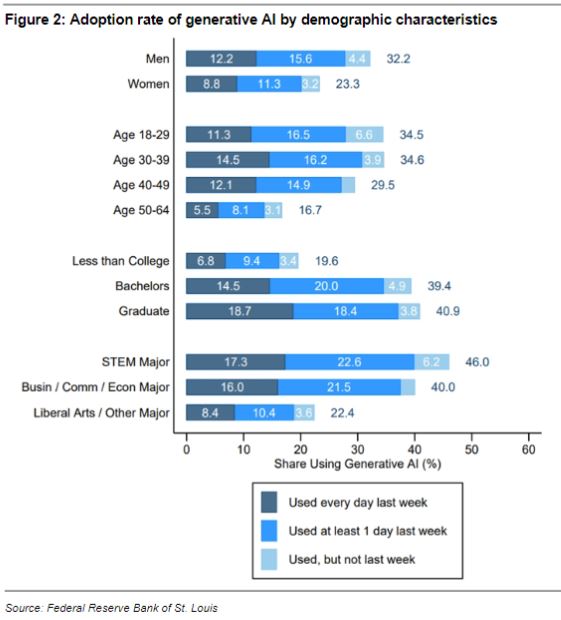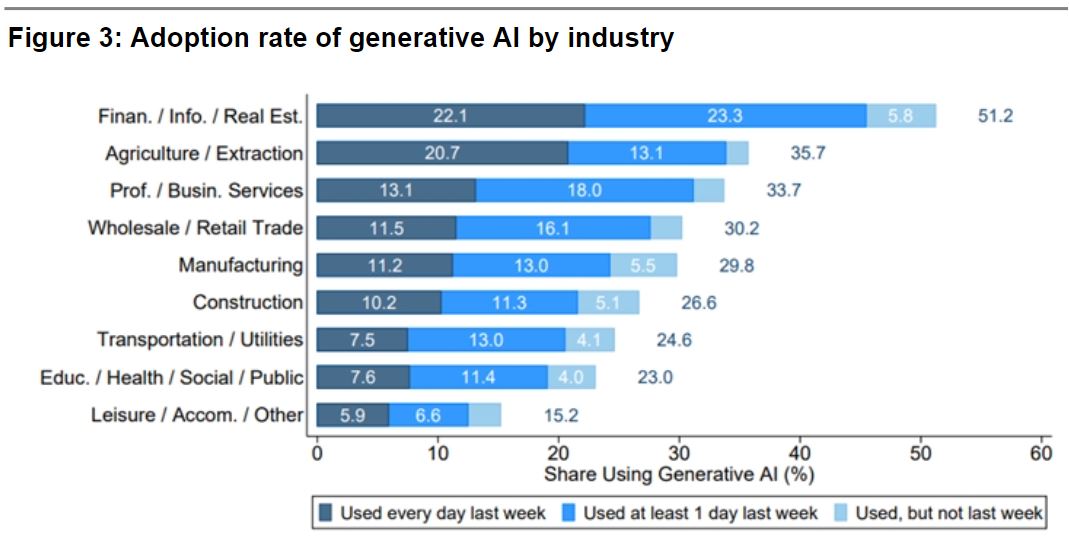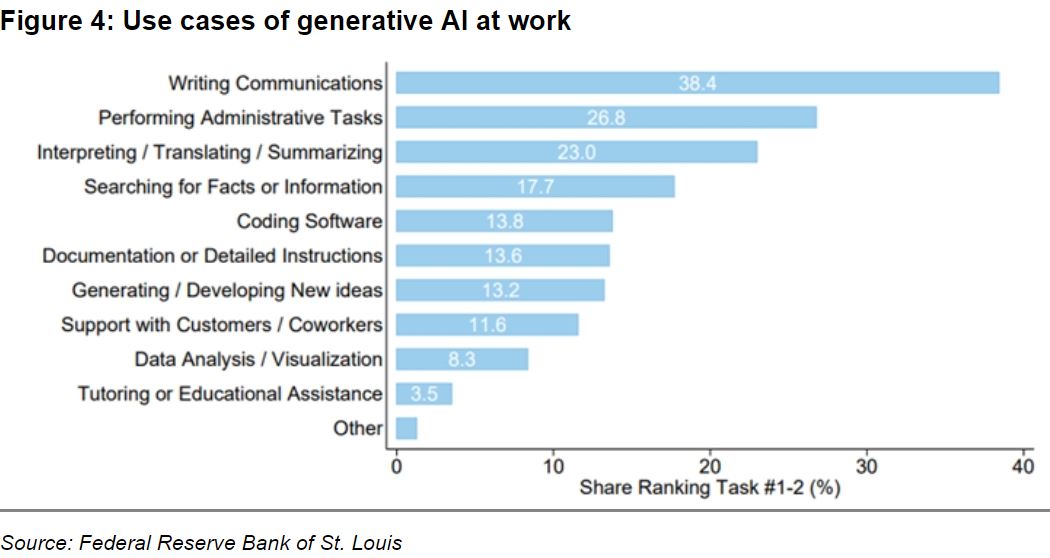Thought of the Week - Generative AI gets adopted really fast
I mean really fast. Faster than the internet, according to a survey by the Federal Reserve Bank of St. Louis from August this year. Just 2.5 years after the chatGPT debut in November 2022, some 40% of Americans reported using generative AI at least some of the time, for work or at home. At the same point in the lifecycle of the internet, the adoption rate among Americans was just half that at about 20%.


How often people use generative AI does, however, vary widely. About 10% of Americans use it daily, while another 20% or so use it once a week on average. As with all new technologies, younger people and men are more likely to adopt it earlier and use it more frequently. And given the nature of generative AI, it is no surprise that people with a STEM degree or a business degree and college graduates in general use it more heavily. After all, generative AI provides more support for people in white-collar jobs than blue-collar workers (chatGPT is bad at laying bricks and welding metal).
Whether this helps with productivity is another matter. The authors of the survey estimate that at current adoption rates and usage, generative AI may increase labour productivity by 0.125% to 0.875% if the productivity gains in lab experiments (see here) are valid in the wild. But that is a big ‘if’ and the authors rightly call these estimates highly speculative.

What surprised me was the types of industries and professions that have adopted generative AI the fastest. Back in the day when PCs and the internet were new, early adopters were people in the computer sciences and science and engineering more generally.
Not so with generative AI. Here, the financial services, insurance, and real estate industries are top of the list, with about 51% of workers using generative AI at least some of the time. Even more surprising to me is the wide adoption of generative AI in agriculture and extractive businesses like mining. I have no idea what one would use chatGPT for in these industries, but alas, this is a representative sample of Americans with relatively low error bars, so there must be something to it.

When it comes to the tasks that generative AI is used for at work, the results are more intuitive. The most common task is the one that I find the most plausible use case: Writing communication. Generative AI is simply a fantastic tool to summarise texts, present information in an easily digestible form, or create engaging headlines. And the fact that the headlines in my posts aren’t very engaging should tell you that I am not using chatGPT and the like but could probably benefit from it...
But it seems that in agriculture and the processing industries, there is a lot of writing to do, plus possibly a lot of administrative tasks that need to be done.

Whatever the reason, generative AI is advancing rapidly, and it is very useful to a lot of people or it would not have gained this much ground in such a short time. No wonder then that businesses are investing a ton of money in developing AI capabilities.
Whether these investments are going to be profitable or necessary is another matter. Remember that when the internet was developed, it was adopted rapidly and it has undoubtedly transformed the world we live in. But the initial enthusiasm also brought with it an extended period of overinvestment and one of the largest stock bubbles in the history of financial markets.


